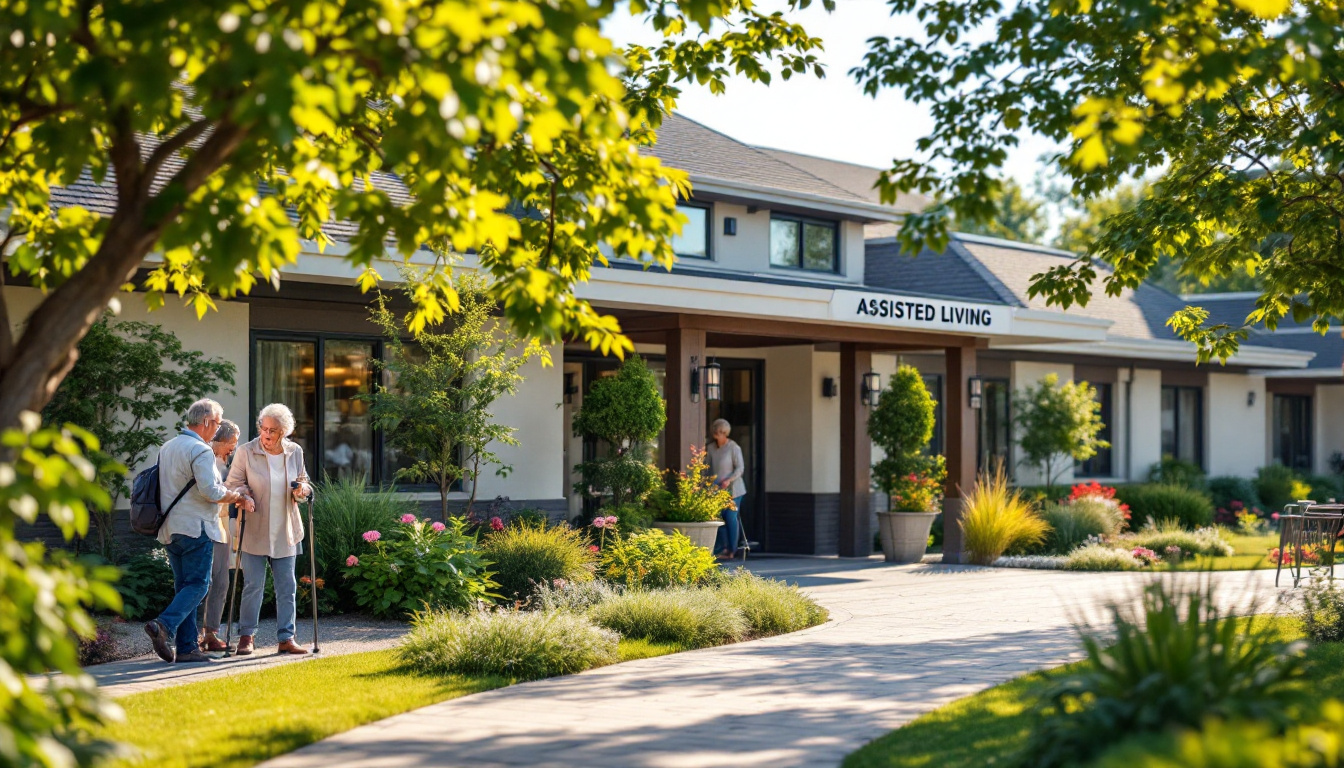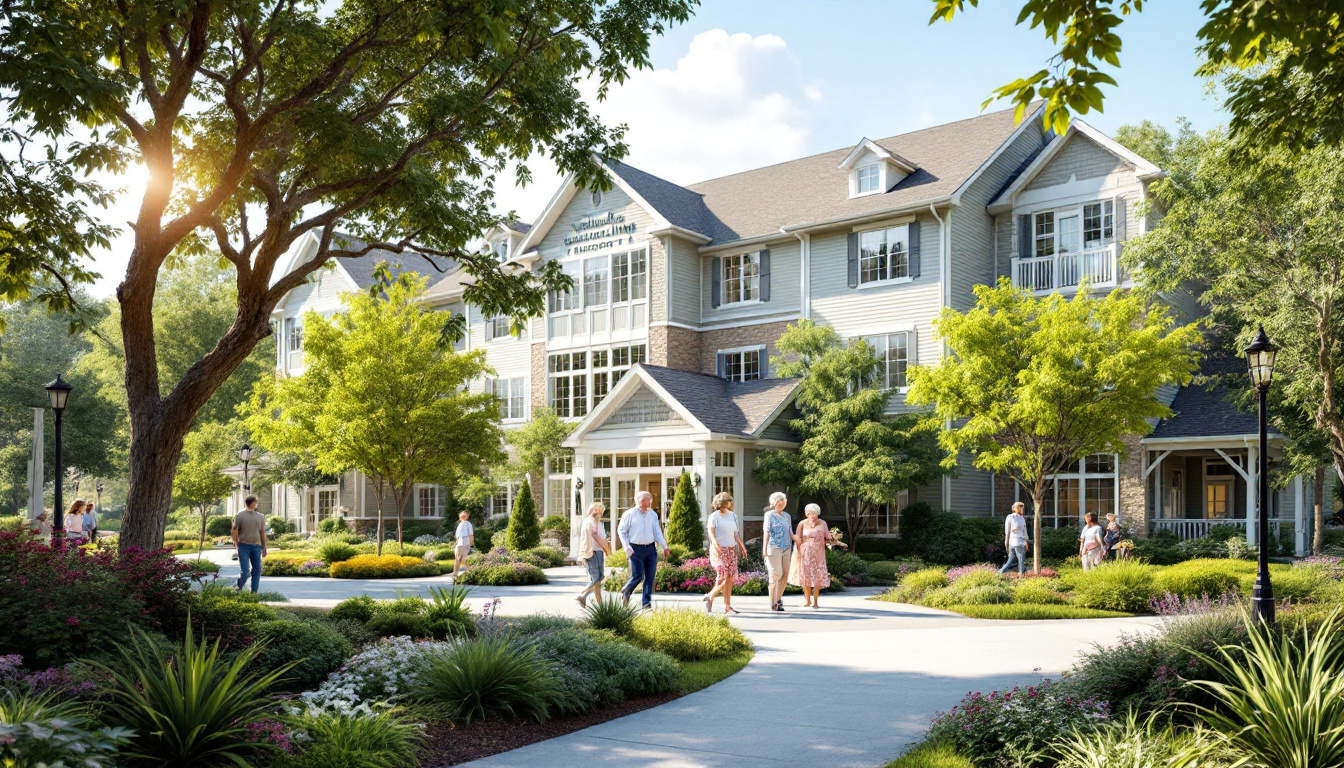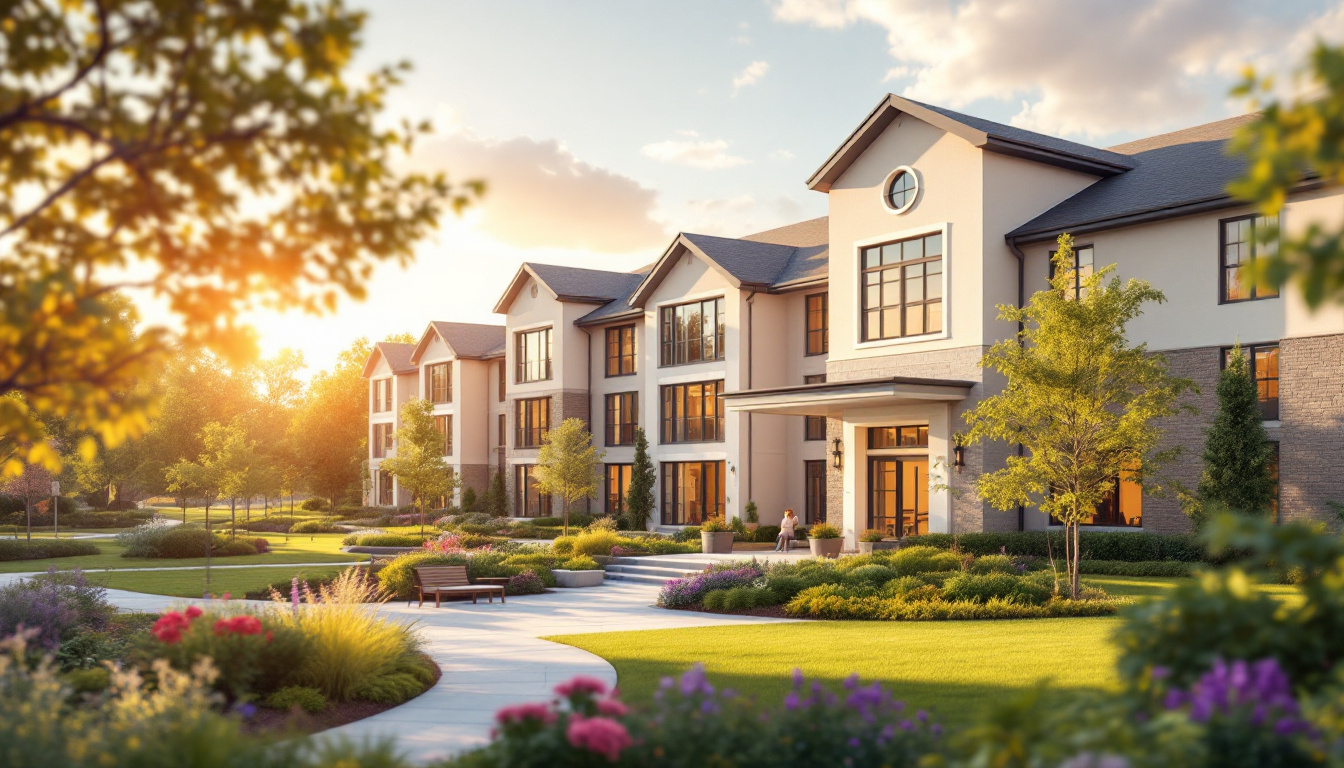How to Choose Senior Care That Prioritizes Quality of Life
Ensuring Dignity and Well-being in Senior Living Choices

Prioritizing Quality of Life in Senior Care Decisions
Selecting the right senior care environment is a crucial step in enhancing the quality of life for aging loved ones. It involves understanding the different care options, evaluating individual needs, and choosing settings that promote safety, independence, engagement, and emotional well-being. This comprehensive guide explores the various types of senior care, key factors to consider, and practical steps to make informed, person-centered decisions that respect preferences and foster a fulfilling, safe, and supportive living experience.
Understanding the Spectrum of Senior Care Options

What are the different types of senior care, and how do they impact quality of life?
Senior care encompasses a variety of services designed to meet the diverse needs of older adults, with each type offering different levels of support and companionship. These options include independent living, assisted living, memory care, nursing homes, hospice, and in-home care.
Independent living is suitable for healthy seniors who can manage daily routines on their own. It provides community amenities and opportunities for social activities, which boost social engagement and foster a sense of independence and belonging.
Assisted living facilities cater to seniors who require some support with daily tasks like dressing, medication management, or meal preparation. They promote safety through environmental modifications and supervised care, while also encouraging social involvement through group activities, outings, and shared dining.
Memory care is specialized for individuals with Alzheimer’s, dementia, or other memory-related issues. These communities offer secure environments and cognitive therapies aimed at maintaining mental function and emotional stability, helping residents preserve dignity and minimize confusion.
Nursing homes provide around-the-clock medical supervision for seniors with complex health conditions or recovery needs. They are staffed with licensed healthcare professionals who deliver personalized medical and rehabilitative services, supporting recovery, health maintenance, and safety.
In-home care offers personalized assistance directly at the senior’s residence. It supports independence by helping with grooming, medication reminders, household chores, and transportation. This option is ideal for maintaining familiar surroundings and fostering emotional well-being.
Each type of care contributes uniquely to quality of life. While independent living focuses on active social engagement and autonomy, assisted living and memory care emphasize safety and personalized medical support. Nursing homes and hospice provide intensive, specialized care for advanced health needs and end-of-life comfort. Ultimately, selecting the right care setting helps seniors retain their independence, enjoy social connections, receive necessary medical attention, and experience emotional support, all vital for their overall well-being.
Evaluating Home and Community Resources for Aging in Place
When planning to age in place, it's essential to thoroughly assess various factors that can influence safety, comfort, and independence at home. Key considerations include examining the current condition of the residence and identifying necessary modifications, such as installing ramps, grab bars, and ensuring doorways are wheelchair accessible. These changes improve safety and make daily activities easier for seniors with mobility challenges.
Accessibility and home adaptability play a crucial role. Homes should be evaluated for hazards like poor lighting, loose carpets, or clutter that could lead to falls. Reconfiguring layouts or adding safety features can greatly reduce risks and support ongoing independence.
Support networks and community resources are vital components. Having a strong network of family, friends, and neighbors provides social interaction and helps in emergencies. Community programs such as home health services, meal delivery, transportation assistance, and caregiver support expand the range of available help, making aging in place more feasible.
Home-based services are an integral part of sustaining independent living. These include personal care assistance, medication management, health monitoring, and household chores. Coordinating these services ensures that seniors receive tailored support aligned with their health conditions and lifestyle preferences.
Financial considerations must not be overlooked. The costs for home modifications, in-home care, and ongoing services can vary. It is important to evaluate affordability and explore options like insurance coverage, Medicaid, or government assistance programs that may help offset expenses.
Risks such as falls, social isolation, and cognitive deterioration need proactive measures. Installing security cameras, emergency call systems, and ensuring easy access to help can mitigate these dangers. Promoting social engagement through community participation and regular contact with loved ones further helps maintain mental and emotional well-being.
Involving seniors in making these decisions early promotes a sense of control and ensures solutions align with their preferences. Consulting with healthcare professionals or aging-in-place specialists can help craft a comprehensive, sustainable plan that respects individual needs, health status, and resources.
For a more detailed exploration, searching for "Evaluating aging in place facilities and services" provides valuable guidance and resources for families and caregivers looking to support safe and supportive aging-in-place strategies.
Creating a Supportive Environment for Well-being

What features and amenities contribute to a supportive and enriching senior living environment?
A well-designed senior living community prioritizes safety, independence, and comfort. Features such as wide doorways, level thresholds, and lever handles enable easy navigation and use, supporting residents’ autonomy.
Safety is further enhanced through handrails along hallways and bathrooms, non-slip flooring to prevent falls, and optimal lighting to improve visibility. Emergency response systems installed throughout the facility allow quick assistance when needed, providing peace of mind.
Amenities that encourage social interaction and physical activity are vital. Communal lounges, activity rooms, fitness centers, and therapy pools create spaces for residents to engage with others and stay active.
Organized social events and recreational programs help foster a sense of community and mental stimulation. Modern technology integration, such as telehealth platforms, smart home features, and easy-to-use entertainment devices, supports ongoing health management and personal enjoyment.
Comfort and convenience are also key. Features like natural ventilation, environmentally sustainable designs, and maintenance-free living contribute to overall well-being. Together, these elements create an environment where seniors can thrive, maintain independence, and enjoy a high quality of life.
Choosing Care Providers That Support Autonomy and Engagement

What key considerations should I keep in mind when choosing care providers that support autonomy, engagement, and safety?
Selecting the right senior care provider involves careful evaluation of several important factors to ensure that your loved one’s needs for independence, safety, and social involvement are met.
First, verify that the provider is properly licensed and certified, adhering to state and national safety protocols. Facilities should follow rigorous safety standards, which include emergency response systems, security measures, and safety modifications like ramps and handrails.
Personalized care plans are essential. These plans should be tailored to each individual’s preferences, focusing on promoting independence by assisting with daily activities such as medication management, mobility, and household chores without undermining autonomy.
Social support plays a crucial role in maintaining mental health and emotional well-being. Look for providers that organize regular social activities, group outings, and community events to foster engagement and reduce feelings of loneliness.
Assess staff qualifications diligently. Proper training, extensive background checks, and ongoing education are indicators of quality care. The staff should approach residents with compassion, respect, and a focus on dignity.
Emergency systems like call buttons, transportation services for medical appointments, and quick response protocols are vital in safeguarding residents.
Transparency is also fundamental. Ask providers about their operational practices, review testimonials from other families, and understand their fee structure. Clear communication about services, costs, and contractual obligations helps build trust.
Engaging in these discussions, visiting facilities, and consulting with current residents and families provide valuable insights. A reputable provider will prioritize safety, support independence, and encourage active participation, helping seniors lead fulfilling, autonomous lives.
Matching Personal Needs with Appropriate Care Options

How can I assess personal needs and match them with appropriate senior care services?
Assessing the individual needs of a senior is the first step in finding suitable care options. Start by evaluating their physical health, such as mobility, ability to perform daily activities, and any chronic health conditions like arthritis, Parkinson’s, or diabetes.
Next, consider cognitive abilities. Look for signs of memory loss, confusion, or disorientation, which may indicate the need for specialized memory care. Social needs are equally important; social isolation can negatively impact mental health, so identify opportunities for social engagement.
For a comprehensive assessment, involve healthcare professionals such as doctors, geriatric specialists, or case managers. They can provide valuable insights into the level of support required and recommend appropriate care levels.
Utilize available resources and platforms that facilitate building detailed care profiles. These tools often include questionnaires and checklists that help highlight specific needs and preferences.
Explore local care providers by reviewing their services, staff qualifications, and resident reviews. This research can be done through facility websites, review sites, and testimonials from other families.
Scheduling in-home consultations with care providers allows family members and seniors to discuss personalized care plans in detail. During these visits, assess whether the proposed care aligns with the senior’s preferences and ensures safety, independence, and emotional comfort.
By combining professional advice, thorough research, and personal observation, you can accurately match a senior’s needs with the appropriate care services, creating a supportive environment that promotes well-being and quality of life.
Selecting Communities That Promote Holistic Well-being
 When choosing senior care communities, it is important to consider various factors that support overall well-being. The size and atmosphere of the community should align with personal preferences, whether one prefers a bustling environment or a more intimate setting. Compatibility in cultural values and lifestyle preferences enhances comfort and satisfaction.
When choosing senior care communities, it is important to consider various factors that support overall well-being. The size and atmosphere of the community should align with personal preferences, whether one prefers a bustling environment or a more intimate setting. Compatibility in cultural values and lifestyle preferences enhances comfort and satisfaction.
Safety is a top priority. Look for communities that feature security measures like secure entrances, emergency call systems, and fall prevention features. The qualifications and ongoing training of staff are equally vital, as capable caregivers contribute significantly to residents’ safety and health.
A vibrant social environment promotes mental and emotional health. Well-rounded wellness programs, engaging social activities, and opportunities for physical exercise help residents stay active and connected. Facilities should offer a range of amenities tailored to diverse needs, including recreational areas, educational workshops, and support groups.
Touring the community provides valuable insights. Observe how staff interact with residents and how residents engage in daily activities. Talking to staff and residents allows prospective residents and families to gauge the warmth, friendliness, and overall atmosphere. It’s also useful to assess the community’s offerings for comprehensive care, including memory support or specialized health services if needed.
Evaluating the community's stability, affordability, and proximity to healthcare providers ensures it can support long-term well-being. Compatibility with personal values, access to parks or cultural venues, and opportunities for meaningful participation in community life make the choice more aligned with the goal of maintaining a high quality of life.
Fostering a Person-Centered Approach to Care and Environment
How can I evaluate and choose senior care options that prioritize quality of life?
Selecting senior care that truly enhances a person’s quality of life requires careful assessment and thoughtful planning. Begin by conducting a detailed needs evaluation to understand the senior’s physical health, mental state, mobility, and personal preferences. This involves considering their desired level of independence, social engagement, and specific health conditions.
Next, research potential care facilities by visiting several communities to observe their environment firsthand. Ask questions about staff qualifications, safety protocols, available therapies, and specialized services like memory care or hospice support. Engaging with current residents and their families can provide valuable insights into the day-to-day quality of care and community atmosphere.
Financial considerations and contractual details are also critical. Review costs, payment options, and what services are included to avoid surprises later. Be sure that care providers are flexible and responsive, capable of adapting to changing needs over time.
Incorporating input from healthcare professionals can guide you to develop a personalized care plan that emphasizes dignity, independence, and emotional well-being. The ultimate goal is to find a care setting where safety, high-quality support, and personal preferences align, helping the senior lead a meaningful and comfortable life.
By focusing on individual needs and engaging in thorough research, families can make informed decisions that foster a respectful, supportive, and enriching environment for their loved ones.
More info search query
Personalized and dignified senior care options
Ensuring a Fulfilling and Safe Senior Living Experience
Choosing senior care that truly prioritizes quality of life involves a thoughtful assessment of needs, careful research of available options, and active participation in decision-making. It requires balancing safety, independence, and engagement, and ensuring that the environment respects dignity while fostering emotional and physical well-being. By understanding the various care types, evaluating features and amenities, and involving the senior in the process, families and individuals can find supportive, enriching settings that promote both comfort and vitality. Ultimately, a person-centered approach tailored to individual preferences and needs paves the way for aging with dignity, joy, and peace of mind, creating a foundation for a meaningful later life.
References
- Improving Quality of Life with Senior Care - Northwest Regional Health
- Understanding Senior Care Levels: Which One is Right for You?
- How To Choose the Right Senior Care: A Guide for Families
- Navigating Assisted Living: A Comprehensive Guide to Senior Care
- How To Choose a Nursing Home or Other Long-Term Care Facility
- How to Choose the Right Level of Care for Your Parents
- How Live-In Care Improves Quality of Life for Seniors - Care Indeed






































































































